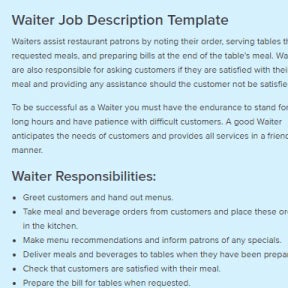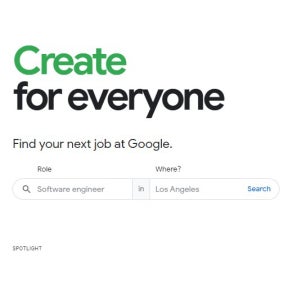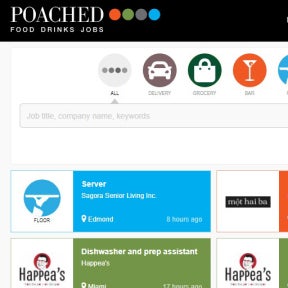How to Find Restaurant Staff:

A step-by-step guide to finding excellent restaurant staff for your eatery or dining establishment. Includes a full hiring process that will help you hire and retain the best staff in the restaurant industry.
Attract the best restaurant staff.
Do your research.

The restaurant industry is notorious for poor working conditions and job seekers are well aware of this. Therefore you need to craft a job post that will address possible concerns. Do some research to find out what neighboring restaurants are offering their staff in terms of benefits and compensation, and see whether you're able to give potential hires a better deal.
Some things restaurant staff value may include:
- Health insurance, including dental and vision insurance.
- A healthy, well-supported work environment.
- Paid parental and holiday leave.
- Free meals and/or meal allowances.
- Travel allowances.
- Tuition benefits.
- Regular team building activities, like parties, dinners, etc.
- Fair compensation and bonuses.
It will be easier to find restaurant workers if your job post gets them excited about working for you.
Ask current employees what they enjoy most about their jobs. They may be able to mention benefits and perks you've overlooked.
Establishing a staff wellness program may be a great way to attract and retain the best staff in the restaurant industry. Think annual trips to wellness retreats, spa days, and wellness leave.
Create separate job descriptions for each position.

Creating one job post that lists all the vacancies at your restaurant is a quick way to advertise available positions. However, restaurant workers—especially top-quality staff who will help put your establishment on the map—want to know specific details about the jobs you are offering, including the compensation, benefits, and incentives you offer, as well as working conditions and job responsibilities.
Be sure to provide an outline of the day-to-day duties for each position and to identify any required training and skills.
Staff you may need to hire include:
Restaurant staff can feel overwhelmed if they are forced to learn on the job. Make it clear that you will provide adequate training and perhaps a mentor for new hires. This is especially crucial if you want to attract good restaurant staff with the potential and desire to expand their skills.
Provide an honest and clear description of the duties, expectations, and limitations of each role. Restaurant shifts are generally under-staffed and workers often need to perform duties outside of their job description, so be transparent about this.
Be sure to emphasize positive aspects of the working environment, management practices, and employee support.
Use a hospitality and tourism job description template to make it easier.

You don't have to spend hours crafting individual job descriptions for each of the restaurant positions you need to fill. A hospitality and tourism job description template will provide much of the boilerplate information you'll need, such as the responsibilities, skills, and qualifications, making it a bit easier.
Advertise the position.
Post your job to general sites, such as Indeed.

Start by posting to general job posting sites such as Indeed. These are great places to start because they get plenty of traffic and they're free.
Make sure your job is picked up by Google.

Google for Jobs allows your posting to be seen in search results. This can greatly increase your job visibility. You can get it picked up by Google by having someone properly format it on your website, or by using a service (such as Betterteam) that creates a properly formatted jobs page for you automatically.
Target job boards dedicated to the food service industry.

Posting your restaurant positions on restaurant job boards will help you narrow your search for restaurant staff.
Consider advertising your positions on job boards dedicated to hourly jobs and shift work, such as Snagajob.
You can also post on more specific job boards, like chef job boards and hospitality job boards. Using these websites will help you reach a niche audience who is more likely to be adequately qualified and passionate about the industry.
Ask employees for referrals.

A great way to find and hire competent restaurant employees is to ask current employees for referrals. Create an employee referral program to motivate employees to participate in the recruiting process. Essentially, the program offers rewards for any referrals leading to hires. Make sure it is clear to your employees that the restaurant workers they refer should have the necessary skills, qualifications, experience, work ethic, and attitude.
Vet your candidates.
Screen your applicants.

Once the applications start rolling in, respond with an email that asks a few important questions related to each role. The answers to these questions should help to reduce the number of suitable applicants by revealing who is not adequately qualified or a good fit for your restaurant.
Example questions:
- Have you received any formal training in this field? (This is particularly relevant for a chef or line cook).
- Do you have experience working lunch shifts or in another high-stress environment?
- Has a kitchen you worked in failed a health and safety inspection? If so, why? (This is particularly relevant for a head chef or kitchen manager).
- Are you available to work night shifts, weekends, and holidays?
Conduct a phone interview.

A phone interview will further shorten your list of candidates and it is less time-consuming than an in-person interview. This stage of the recruitment process allows you to verify answers to the screening questions and to get an idea of the types of personalities each applicant has.
Some example questions include:
- Can you describe your customer service experience?
- Why did you leave your previous position?
- Which restaurants have you worked for previously?
- What kind of training have you received in the food service or hospitality industries?
- What are your salary and benefits expectations?
- What makes you the perfect candidate for this position?
Use the phone interview to elaborate on aspects of the job candidates are most interested in, such as the benefits and compensation structure, and growth opportunities. Also, provide an accurate description of the work environment and culture, and allow each candidate to ask questions or voice concerns.
If the answers provided in the phone interview drastically differ from the answers to your screening questions, this is a red flag.
Interview candidates and evaluate their skills.
Conduct an in-person interview.

At this stage of the recruitment process, you will have a good idea of which candidates are sufficiently qualified for each position, but you will still want to ensure that they will fit in with your team and be comfortable with the working environment.
Invite candidates on your shortlist to an in-person interview, during which you will show them around your restaurant, describe the processes you follow, from greeting guests to re-setting tables, and introduce them to your staff. To save time, you can also combine the in-person interview with the test run, especially for waiting and other front-of-house positions.
Conduct a test run.

To help you assess a candidate's skills and abilities, you'll want to invite them for a test run in your restaurant. The necessity of this may vary, being incredibly important when hiring restaurant employees for food preparation, but less so when recruiting, for example, dishwashers. In the case of servers and hostesses, you'll want to evaluate their customer service skills.
Use both the interview and the test-run to get a feel for each candidate's personality type. Try to determine how well they will complement your existing team.
Hire your new restaurant staff.
Make an offer.

Once you've decided which candidates you would like to hire, give them a call to inform them that you are offering them the position. Do this fairly quickly, as the restaurant industry is known to be very competitive and candidates are likely to be looking at several options while they are actively seeking work. After the phone call, send an email or letter with a formal job offer.
Use our job offer letter template to craft a compelling and professional letter.
Onboard your new restaurant staff.

Onboarding is a key final step in the hiring process that is not to be overlooked. Make a good first impression and get the new hire up and running fast by having a detailed and organized onboarding process.

